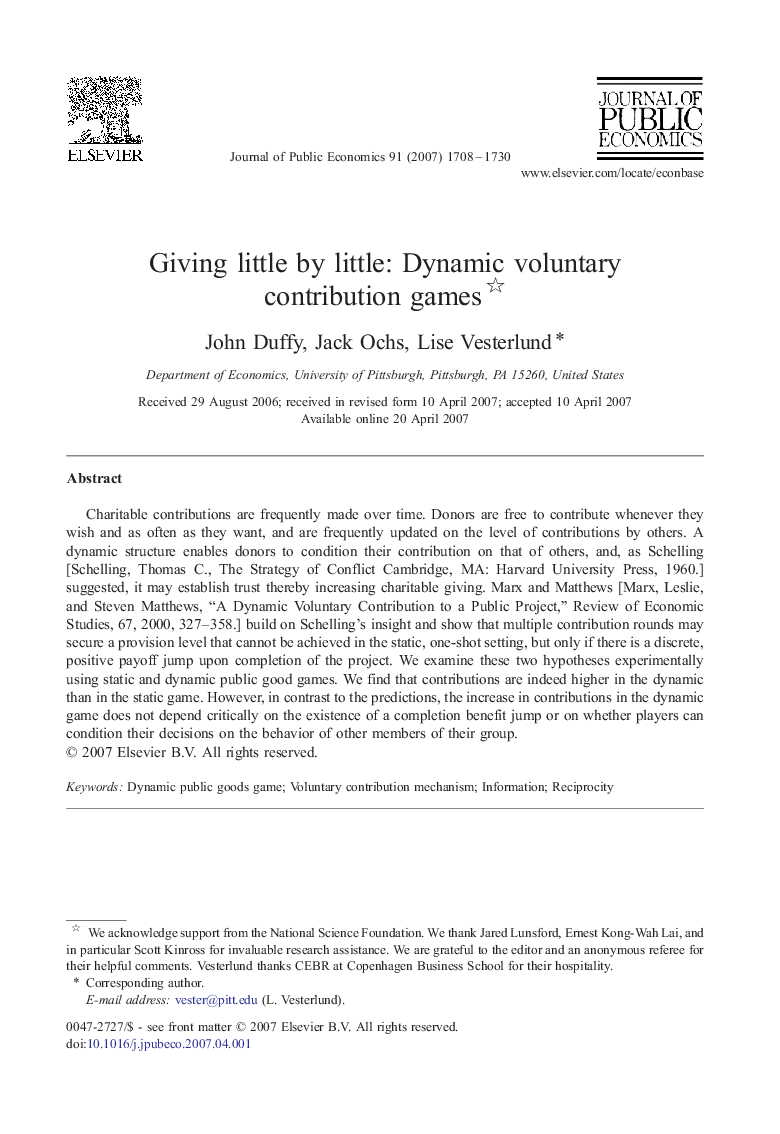| Article ID | Journal | Published Year | Pages | File Type |
|---|---|---|---|---|
| 970313 | Journal of Public Economics | 2007 | 23 Pages |
Charitable contributions are frequently made over time. Donors are free to contribute whenever they wish and as often as they want, and are frequently updated on the level of contributions by others. A dynamic structure enables donors to condition their contribution on that of others, and, as Schelling [Schelling, Thomas C., The Strategy of Conflict Cambridge, MA: Harvard University Press, 1960.] suggested, it may establish trust thereby increasing charitable giving. Marx and Matthews [Marx, Leslie, and Steven Matthews, “A Dynamic Voluntary Contribution to a Public Project,” Review of Economic Studies, 67, 2000, 327–358.] build on Schelling's insight and show that multiple contribution rounds may secure a provision level that cannot be achieved in the static, one-shot setting, but only if there is a discrete, positive payoff jump upon completion of the project. We examine these two hypotheses experimentally using static and dynamic public good games. We find that contributions are indeed higher in the dynamic than in the static game. However, in contrast to the predictions, the increase in contributions in the dynamic game does not depend critically on the existence of a completion benefit jump or on whether players can condition their decisions on the behavior of other members of their group.
